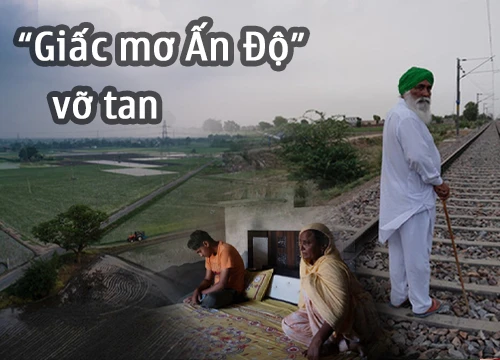Kanye West dating Ronaldo's ex-boyfriend, Kim "super round 3" is "watched" by a single billionaire?

3 | 0 Discuss | Share
Originating in the Himalayas in northern India, flowing east and south through Bangladesh, the Ganges River is considered a sacred stream, washing away human sins according to Hinduism.
Legend of the Ganges River
According to Varanasicity, the Ganges holds a noble and sacred place in Hinduism. The important position of the Ganges can be attested from the fact that there are many ancient Indian texts mentioning the river.
For example, the Ganges is mentioned again and again in the Vedas, Puranas, Ramayana and Mahabharata. In Hindu mythology, the Ganges is associated with many legends and myths.
According to one of the legendary stories passed down by the Indian people, Ganga (the name of the Ganges in Indian) was one of the two daughters of Meru (the Himalayas), the other being Uma, the wife of the god Shiva. . God Indra (one of the supreme gods of Hinduism) prayed for Ganga to be taken up to heaven to soothe the gods with her cool water.
After that, there are various legends about how the god Ganga came to Earth. The story of the origin of Ganga on Earth is told differently in the Ramayana, Mahabharata and Puranas. But the most interesting legend about the Ganges revolves around a king named Sagara, his sons, grandson (Ansuman) and great-grandson (Bhagirath).
Once, when King Sagara performed the Ashwamedha (horse ceremony), in which a horse was allowed to roam at will and the warriors had to try to stop the horse, if they failed, it meant that they accept the king's monopoly. King Sagara's 60,000 sons went looking for the horse and eventually found it near the sage Kapila meditating. In an attempt to capture the horse, the boys disturbed Kapila. He immediately burned them to ashes with his fiery gaze. After that, the souls of the princes were drifted, not escaping.
The sage Kapila was impressed with the profound thinking and profound knowledge of Prince Ansuman (king Sagara's grandson) and suggested that the waters of Ganga, the goddess residing in heaven, could liberate the souls of the sons of King Sagara.
So this king had to ask Lord Shiva to save the souls of the princes. King Sagara's great-grandson Bhagiratha prayed to Lord Shiva for help.
Lord Shiva sent goddess Ganga to help. She brought water from the fairy world through the hair and feet of God Siva to the ground and then flowed to the place where the princes were burned alive. Their souls are liberated. From there, the name of the river was created, named after the goddess to remember the goddess's merit. That's why the Ganges is called "Ganga" in Indian.

The Ganges River is considered the holiest river and also the place where the heart of India is kept. From its source, the Ganges River flows through cities and industrial centers, is the main source of water for more than 400 million people and is "worshiped by billions of devotees".
From the time of King Alexander the Great (356 - 323 BC) of Macedon heard about the fame of the Ganges and tried to extend the border to this sacred river. Famous poets such as Virgil, Ovid, and Dante all praised the River Ganges, which had a unique place in medieval human thought.
The Indians believe that the Ganges is the only river that flows from all three worlds - Heaven/Swarga, Earth/Prithvi and Hell/Patala. One who has traveled to all three worlds is called Tripathaga in Sanskrit.
Hindus believe that bathing in the Ganges can help wash away all sins. People also believe that just touching the river can achieve salvation and so the ashes of the dead are often dropped into this sacred river.
But the river has to receive a large amount of industrial waste, wastewater from humans and livestock.
The pollution level of the Ganges always spikes during the pilgrimage season in May and June, when thousands of people flock. Pilgrims use Ganges water to drink or bathe, with the belief that the sacred flow will wash away all sins.

At the banks of the Ganges River, people built large steps, fixed nets or railings so that people could stoop to drink water safely. Riverfront souvenir shops sell plastic bottles for those who need to bring water home.
About 500,000 pilgrims flock to the city of Rishikesh each year. However, the city's sewage plant can only serve the needs of 78,000 people. The government built many public toilets, even a small rain can cause wastewater to flow directly into the river.
The scientists point out that the upper reaches of the river, which has not been affected by pollution, also harbor large amounts of antibiotic-resistant bacteria.
According to a 2017 report by the Government Ministry of Science and Technology, India has the highest rate of antibiotic resistance in the world. Recent trials have shown that of the four bacteria most commonly found in Indian hospitals, about 70% are typically antibiotic-resistant.
The bacteria are found in the intestines of animals, industrial waste and living organisms in the Ganges water. Pilgrims drink river water, become infected, and often use antibiotics soon after. Antibiotics destroy beneficial bacteria, creating conditions for harmful bacteria to multiply and become resistant. Cities like Varanasi, Haridwar, Allahabad... are areas with the potential for large-scale transmission of antibiotic-resistant bacteria.

Despite the warnings of experts, Indians do not seem to be concerned about the pollution of the Ganges river.
"The goddess of the Ganges is our mother. Drinking river water is our destiny. If you have faith, you are safe," said Jairam Bhai, a 65-year-old pilgrim restaurant owner Jairam Bhai, in his hand. Still holding two small bottles waiting to get water.

Meanwhile, Jagdish Vaishnav, a 30-year-old English teacher, said: "We don't believe in bacteria, we don't even think about it." Jagdish used to bathe and drink river water in Rishikesh, Haridwar and even Varanasi, the most polluted areas.
Hindus have the custom of cremating the dead body and floating it in the river. The practice was banned in 2017. In 2014, after becoming Prime Minister, Mr. Narendra Modi pledged to work to reduce pollution levels for the river with policies such as building more treatment plants. wastewater, relocation of more than 400 tanneries leading to pollution. However, this plan has not yet been implemented.
The young man fasted for 33 days to pray to God to give him a Lamborghini supercar for his girlfriend and the end  team youtube17:30:02 27/05/2021The story of an unemployed young man who was hospitalized after setting a goal of a 40-day fast with the belief that if he completes this challenge, God will give him a Lamborghini supercar to give to his girlfriend is currently the focus. ridicule on social media. The...
team youtube17:30:02 27/05/2021The story of an unemployed young man who was hospitalized after setting a goal of a 40-day fast with the belief that if he completes this challenge, God will give him a Lamborghini supercar to give to his girlfriend is currently the focus. ridicule on social media. The...

3 | 0 Discuss | Share

5 | 0 Discuss | Share

3 | 0 Discuss | Share

3 | 0 Discuss | Share

2 | 0 Discuss | Share

4 | 0 Discuss | Share

3 | 0 Discuss | Share

2 | 0 Discuss | Share

2 | 0 Discuss | Share

5 | 0 Discuss | Share










1 | 0 Discuss | Report